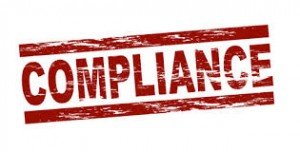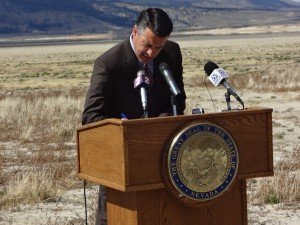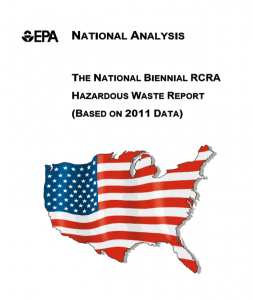 Why are closed containers for hazardous waste so important?
Why are closed containers for hazardous waste so important?
January 13, 2015
By Ken Trankle
One of the most common RCRA violations I run across is the failure to “put a lid on it”. If you are storing hazardous wastes, the container must be closed at all times unless you’re adding or removing waste from a container. Mismanaged facilities will often leave drums open, allowing fumes to escape into the area and risking spills. Other examples of poor hazardous waste management include using plastic wrap and aluminum foil coverings over containers or a piece of plywood across the top of a drum.
So, what is the definition of closed container? First, use containers and lids that are leak proof, compatible with the wastes, and in good condition. Next, closed means using a lid with a vapor tight seal – shut tightly enough that the contents cannot spill if tipped over and chemical vapors cannot escape into the air. Make sure that:
- Lids are on
- Lids are screwed tight
- Snap rings are latched and tightened
- Bungholes are securely capped
- Funnels, if used, are closed and screwed into the container
- Containers and lids are compatible with the waste.
Make sure all the employees that work with hazardous waste containers are trained properly on how to close them the right way, and why it’s important. As an owner or manager, you should regularly check to make sure hazardous waste containers are closed.
As Benjamin Franklin used to say “an ounce of prevention is worth a pound of cure”. While closed containers are absolutely critical, secondary containment systems prevent accidental leaks or spills from becoming environmental hazards. Secondary containment systems – such as a (sealed) concrete pad, a pan or tub underneath the containers – inexpensively catch any release or spill that could occur when filling or emptying a container, or if a container leaks.
Additional information on this subject and waste storage requirements can be found at the following link: http://unrbep.org/pdf/fact_sheets/Put_a_lid_on_it!1011.pdf,
 For over ten years, I have worked in environmental management. During that time, one thing that has remained constant is the disillusion of business owners and managers that they are in compliance with regards to hazardous waste. They have identified their waste as hazardous and have hired a company to haul the waste away and dispose of it. In their minds, they have done the “right thing”. Continue reading Confident Compliance
For over ten years, I have worked in environmental management. During that time, one thing that has remained constant is the disillusion of business owners and managers that they are in compliance with regards to hazardous waste. They have identified their waste as hazardous and have hired a company to haul the waste away and dispose of it. In their minds, they have done the “right thing”. Continue reading Confident Compliance On Wednesday April 8, 2015 at Washoe Lake State Park, Governor Sandoval signed Executive Order 2015-03 establishing the
On Wednesday April 8, 2015 at Washoe Lake State Park, Governor Sandoval signed Executive Order 2015-03 establishing the  Why are closed containers for hazardous waste so important?
Why are closed containers for hazardous waste so important?